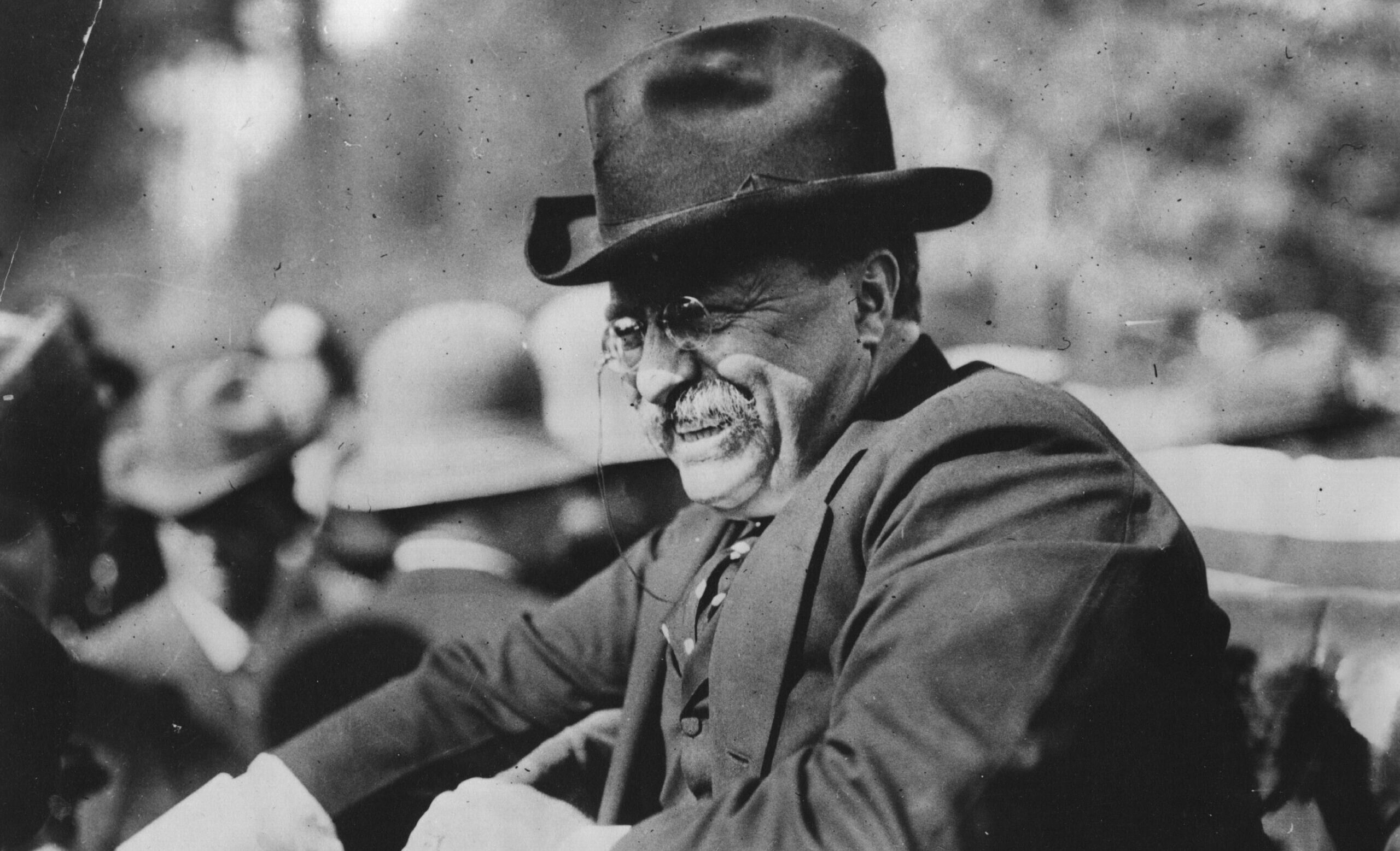This review appears in the Spring 2019 issue of Modern Age. To subscribe now, go here.
Alienated America:
Why Some Places Thrive While Others Collapse
By Timothy P. Carney
(Penguin Press, 2019)
In his 1958 dystopian satire, The Rise of the Meritocracy, the British sociologist Michael Young imagined a not-too-distant society that had abandoned all the old ways of assigning power and position by ascription or inheritance or patronage. In their place it had substituted the systematic use of schooling and standardized testing to select out an elite class, one designed to serve the purposes of rational functionality and technocratic efficiency. In Young’s “fable,” a series of educational reforms in the late twentieth century had established the principle of “merit” as the principal goal of social sorting and the ultimate criterion for advancement into political authority. And “merit” above all else meant possession of a sufficiently high IQ. Young’s meritocracy was to be the fulfillment of Plato’s dream of philosopher-kings, the means by which political and cultural power could be turned over to a cognitive elite. An aristocracy, yes, but to all appearances a thoroughly natural one.
But Young suspected that this meritocratic idea would prove highly unsatisfactory in a society that had not abandoned its democratic aspirations. In Young’s fiction, the “losers” in the meritocratic race, those poor souls who had been systematically deprived of any plausible excuse for their failures by the procedural “objectivity” of the tests by which they were excluded, nevertheless seethe with resentment and shame. The meritocratic society quickly becomes polarized between these antagonists. Eventually the deplorables on the bottom, an odd alliance of working-class men who had been deprived of meaningful work and upper-class women who had become imprisoned by the demands of raising high-IQ children, engineer a successful revolt, which occurs in the year 2034. Young calls the insurgents “populists.”
It sounds familiar, doesn’t it? All over the Western world, the specter of social division hovers ominously, and the meritocratic ideal itself begins to fester. Timothy Carney’s new book is a thoughtful contribution to the growing stack of insightful articles and books exploring this development, specifically looking at the troubling ways in which the culture of the United States seems to be fracturing or fragmenting. The emergence of a new cognitive elite, as distinct from the rest of humanity as the most gilded caste of Chinese antiquity, offers a variation on the same theme that Young sounded more than sixty years ago. This phenomenon is accordingly reflected in a great deal of the most penetrating social commentary of our day. A short list of relevant texts would include Charles Murray’s Coming Apart, Robert Putnam’s Our Kids, Bill Bishop’s The Big Sort, Angelo Codevilla’s The Ruling Class, Joel Kotkin’s The New Class Conflict, J. D. Vance’s Hillbilly Elegy, Robert Wuthnow’s The Left Behind, and Richard V. Reeves’s Dream Hoarders.
Carney is especially interested in the plight of those left in the dust. He is not a fan of Donald Trump but is entirely sympathetic to those who voted for him and understands the sense of desperation that led them to do so. But he is less concerned with their specific political objectives than with the distressed and declining conditions of their lives, the conditions that gave rise to their votes. His distinctive contribution to the subject is in his insistence that it is the erosion of community, and of the institutions in which community is concretely embodied, that best accounts for the myriad social pathologies afflicting working-class America: loss of work, disability, drug abuse, the breakdown of family and marriage, disappearance of churches, the evaporation of nearly all institutions of civil society, and the hopelessness and futility that are the inevitable fruit of loneliness and isolation.
When Donald Trump flatly proclaimed that “the American Dream is dead,” he was speaking for and to such people. Even more than the economic devastation wrought by the closing of plants, disappearance of whole industries, and steady erosion of working-class incomes, it is the wholesale loss of “social connection,” Carney contends, that constitutes the master problem responsible for all other present difficulties. Human beings can manage all sorts of hardships when they can endure them together, but in isolation they are as weak as tender reeds.
To get a better sense of what’s wrong in moribund communities like Uniontown, Pennsylvania, Carney contrasts them with thriving communities like Chevy Chase, Maryland; Oostburg, Wisconsin; or Salt Lake City, Utah. He concludes that vibrant networks of social connection in the successful communities, even more than their economic well-being, constitutes the crucial element in their well-being and sets them apart from the declining places. Somehow, then, the solution to the problems of collapsing communities must lie in the revitalization of civil society—that is, of the social bonds within which individual lives find meaning and purpose.
Given that Chevy Chase is one of the wealthiest and most recession-proof communities in the nation, its relative success seems unsurprising—so unsurprising that it might have been better to use a different example. But in a place like the wholesome midwestern Oostburg, a modest farming community, the key seems to be the community’s widely shared Dutch Calvinist religious practices, very much including a regular pattern of church attendance. There is an implicit argument here that for communities of lesser means the social glue provided by active religious institutions is of crucial importance, binding people together in ways that can offset the buffeting and uncertainties of changing economic fortunes. In fact, if one were to boil Carney’s argument down to a single statement, it would be that the existence of religious institutions is essential to the good life for all but the most privileged communities. (Why Chevy Chase does not seem to need religion goes largely unexplained.)
There is more than a whiff of the theoretical work of Robert Nisbet and his great predecessor Émile Durkheim in the background here. Perhaps because of their influence, Carney’s argument tends to take a rather functionalist view of religion: that religion is chiefly important as an instrument of social cohesion and less so for its intrinsic content, namely, its moral teachings, cosmology, spiritual ethos, and answers to the great questions of life’s meaning. Institutions are more important than beliefs for Carney: it is more important for him that people go to church regularly and take part in related activities than that they believe anything being preached or structure their individual lives around those beliefs.
His portrait of religious institutions is a blur of warm and fuzzy community activities—lots of generous volunteerism and charitable work—and very little that commands the individual conscience. This is a picture that fails to include the essential role played by elemental social forces such as honor and shame in holding a community together and in inhibiting our gravitation toward disreputable acts. Showing up at church means, simply, that we make ourselves visible to others, week after week after week. Plato’s story of Gyges’s ring, which Tolkien echoed in his Hobbit tales, is a vivid illustration of the moral collapse that befalls us when we have the capacity to become invisible.
* * *
Talk of shame is likely to conjure dreadful visions of The Scarlet Letter and nasty judgmentalism in many people’s minds. But that should not be the case. The moral hypertrophy of Hawthorne’s Salem should not blind us to the fact that a community is held together as much by its sanctions as by its inducements. Shame plays an essential regulative role in maintaining the equilibrium of a decent community, providing a force that can supplement individual motivation in seeing to it that men and women behave decently. Part of the value of ecclesiastical institutions is that they are places where we come together and are seen and known by others and see ourselves reflected in the eyes of others whose judgments matter to us. They are places where the acts that lead to the decline of marriage, family, and the other building blocks of moral life can be disapproved without the disapproval even needing to be stated. When you go to church regularly, you know damn well how people will react to you if you show up after having done something transgressive, callous, exhibitionistic, or cruel. If you are lucky, they will rebuke you directly and sharply.
Carney understands all this, but he does not like to talk about it, and in his defense none of us does these days. We want to accentuate the positive and therapeutic aspects of religion, and we fear playing into the stereotypical view of religion as something negative and obsessively punitive, like the Puritanism of Hawthorne’s Salem. But there is much to be said for the essential role of shame—the fear of being found morally wanting in the eyes of others—in the life of a morally healthy community, even an entirely secular one. Shame directs us when our own conscience is not up to the job. The presence of others in the community induces us to rise above ourselves and be better than we would be following our own lights. And when shame leaves the stage—as when, for example, a man openly brings his mistress to church and no one expresses disapproval, or a man abandons his wife and family, or a woman abandons her children, or any number of the once-shameful acts one begins to see with increasing regularity in a declining community—a moral barrier has fallen, and a pillar of community life has begun to crumble.
The impulse toward shame is a sign of community health, of an undefeated desire for honor and self-respect. Its absence is the opposite of these things. A community that is in economic free fall, where work is nonexistent and family life has disintegrated, is likely to be a place where shame and honor have lost their power, and men (especially men) are capable of almost any sort of self-destruction.
Carney also doesn’t like to talk about another essential feature of community: exclusiveness. Again, very few of us want to talk about that. Inclusive is a good word, and exclusive is a bad one, except when one is talking to a real estate agent or a college-admissions officer. Carney himself, in his concluding chapter, points to his own Catholic parish as an example of an inclusive form of community. But he admits it is inclusive only up to a point, and that is as it should be: to be a lively and vibrant community, a group of people must be able to include those it wants to include and exclude those it doesn’t.
Robert Putnam’s important work on cultural diversity, in which he reluctantly concluded that diversity correlates with social distrust and lack of social cohesion, supports this commonsense assertion. The successful communities in Carney’s account all have in common a striking degree of social homogeneity, and that is not a coincidence. Even gentle and squeaky clean Oostburg operates on the principle that “If you ain’t Dutch, you ain’t much.” The Mormonism of Utah may be the most impressively communitarian religion in the world, but it is not known for its social heterogeneity. If any particular religion is to be the focal point of community life, it must have a way to say who belongs to it and who does not, which means having the power of exclusion.
It also means having the power of belief. Community is about shared beliefs and practices. The word community is a mere abstraction; actual communities must be built around something particular, some commonality of belief, condition, experience, history, or aspiration. The vision of America as a pluralistic society of local communities, each with its own idiosyncrasy, unaccountable to centralized authority, is one of the most beautiful and appealing aspects of Carney’s book, a true reconciliation of opposites that is America at its very best.
But how we can get there, and forswear the homogenizing effects and deforming powers of a global economy and placeless digital culture, is another question. In this respect, Carney’s book has no answers, but it is hard to fault him on that count. Answers are few and far between because the problem goes to the very roots of our civilization. One might at least begin by acknowledging that we must give communities the freedom to be communities, which means giving them corporate liberty to sanction and exclude.
We also will have to revisit some of the most fundamental questions about the nature and purpose of our common life. It is not only that the changes wrought by the economic and social transformations of the past thirty years have led to an America riven in two. It is worse than that. We are faced with the very real prospect that a significant portion of our fellow Americans will increasingly be regarded as superfluous—as creatures who no longer have a useful role to play in a new society with a labor force made up of accredited elites in command of their robots and driverless cars, and where the dignity of work is only a faint memory. The bitterly ironic command “Learn to code!” is the symbolic expression of that prospect, the erasure of the working man as we have known him for hundreds of years and his replacement by the properly schooled man.
But is that the way it has to be? Don’t our bonds as Americans and our shared belief in the dignity of every individual dictate that we find ways to place the well-being of our fellow citizens ahead of the demands of a sorcerer’s-apprentice economy?
There is one other factor to consider. No institution is more central to the process by which our meritocratic elites are selected than higher education, which has in the past half century become a behemoth that bestrides American society and serves as the gatekeeper to all the professions and ranking positions. Upward mobility depends upon educational credentialing, which means that the immense costs and debt loads entailed in the American system of higher education have taken on an outsized importance. But the steady erosion of academic standards has exacted a toll on higher education’s credibility. And now we have the scandals that have erupted with the Department of Justice’s disclosures regarding the use of bribery and fraud to manipulate the admissions process at prestigious colleges.
These developments pose two troubling questions, both of which go to the heart of the social division that Carney has described. First, is merit (or at least the credential signifying it) something that can be bought? And second, is the college degree that is being earned, or bought, an accurate gauge of the graduate’s intelligence, learning, and aptitude? Or is it merely an empty signifier, the product of a process of expensive social sorting that has little to do with education and everything to do with the status that a university degree confers?
If the latter is the case, what are the implications for the society we have built, in which a mandarin class has accrued all the benefits and none of the costs of a comprehensive reordering of the social and economic world? This will be increasingly a point at issue in the conflict between the two Americas: not only the question of whether meritocratic standards are fair or could be made more fair but whether they actually measure anything real. If they are just the means by which we go about the task of social sorting, and of perpetuating a rigged social system in which meritocratic elites reproduce themselves, then the excluded classes have a powerful reason for grievance. ♦
Wilfred M. McClay is the G. T. and Libby Blankenship Chair in the History of Liberty at the University of Oklahoma. His most recent book is Land of Hope: An Invitation to the Great American Story.
Founded in 1957 by the great Russell Kirk, Modern Age is the forum for stimulating debate and discussion of the most important ideas of concern to conservatives of all stripes. It plays a vital role in these contentious, confusing times by applying timeless principles to the specific conditions and crises of our age—to what Kirk, in the inaugural issue, called “the great moral and social and political and economic and literary questions of the hour.”
Subscribe to Modern Age »












